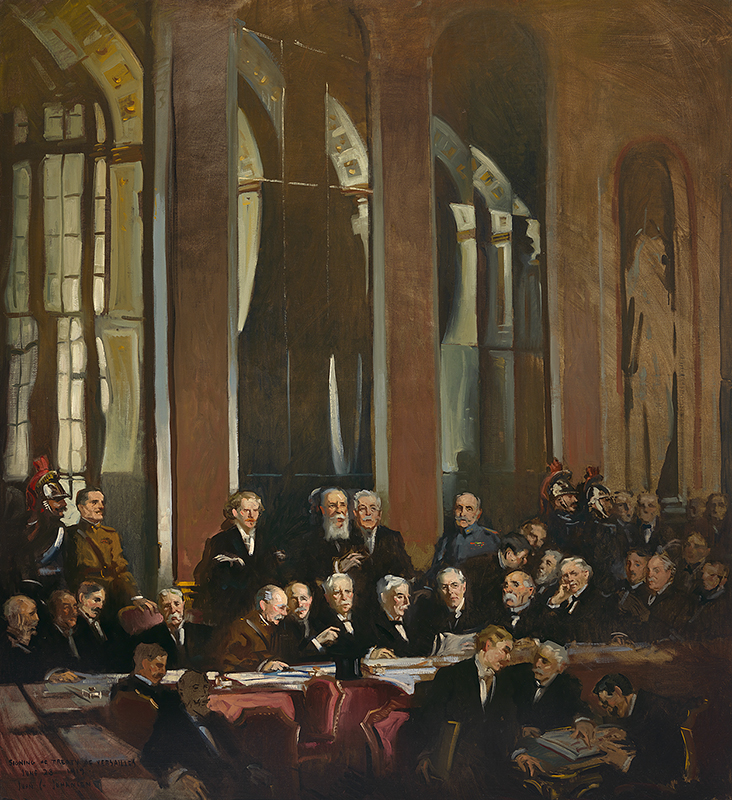Signing of the Treaty of Versailles

Signing of the Treaty of Versailles | John C. Johansen (1876–1964) | Oil on canvas, 1919 | Gift of an anonymous donor
The American belief in reform and progress at the beginning of the twentieth century received a severe blow with the outbreak of war in Europe in 1914. Many believed that nations no longer had to resort to war to solve differences, even though for years President Woodrow Wilson and others had perceived Germany to be a threat to democratic nations. Wilson clung to the principle of American neutrality, but he was obligated to protect American maritime and commercial interests, which, were being interfered with by both Germany and Great Britain. Germany’s decision to begin unrestricted submarine warfare in February 1917, in retaliation for the British naval blockade, forced Wilson’s hand. On April 2, 1917, he proclaimed that the “world must be made safe for democracy,” and days later Congress passed a declaration of war against Germany.
The disillusion that accompanied the outbreak of World War I, supplanted by the enthusiasm and idealism accompanying the entry of the United States into the war, returned in the final outcome. The Allies won, but it was not, as Wilson had proclaimed, the “war to end all wars.” His hope for a lasting peace that would protect the sovereignty of all nations rather than punish the vanquished and his vision of a League of Nations did not survive the realities of international politics.
Danish-born artist John C. Johansen portrayed the treaty-signing ceremonies at Versailles in 1919. Johansen was commissioned by the US government to create the portrait, as later described by a member of the selection committee, for his “artistic ability and courage of the highest order.” Much time, travel, and negotiations occupied the commission, as the twenty-four sitters to be included were then scattered across different cities in Europe and America. Nonetheless, Johansen embarked on the artistic expedition, traveled to each man’s location, and created studies of every sitter on a two-foot by three-foot canvas. A sketch of the interior of the Palace of Versailles, as well as a preparatory draft of the compiled work, was also completed in creating this finished portrait.
- Consider the setting of this portrait. What do you notice? Why does the artist focus two-thirds of this portrait on setting?
- How are light and shadow used in this portrait?
- Describe the men portrayed. What are they wearing? What are their poses? And expressions? Why is this important?
- Where is President Wilson? Why might his location be important?
- After reading more about the Treaty of Versailles, what kinds of connections can we make between this portrait and the Treaty?